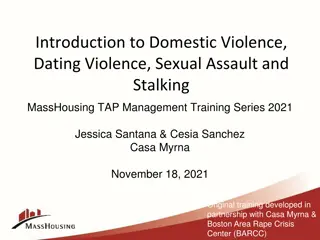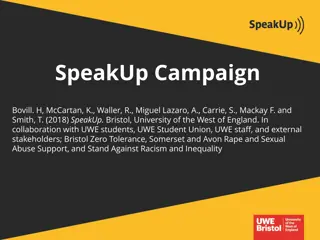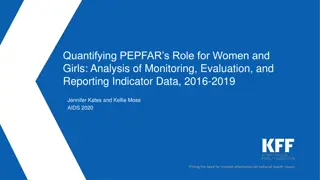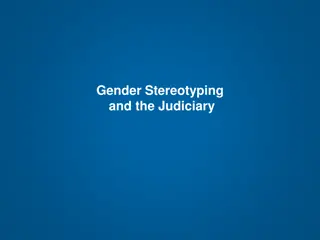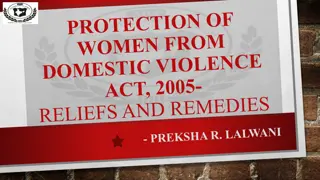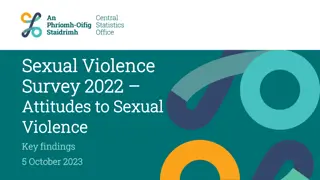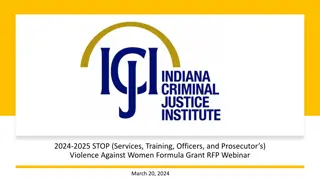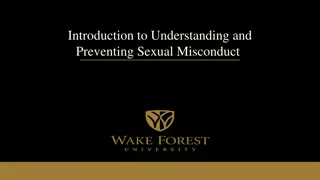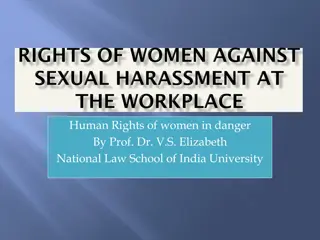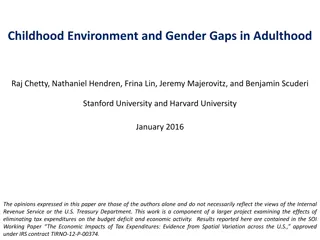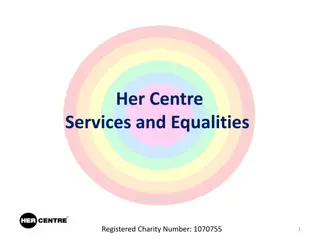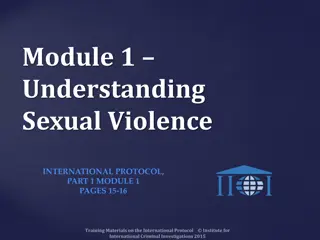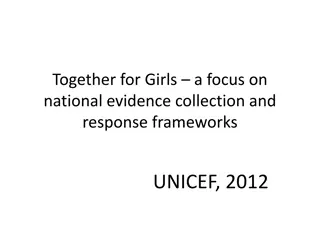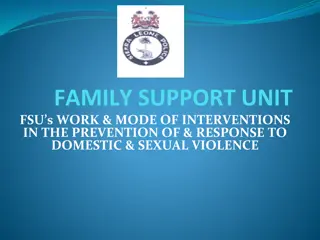Critical Analysis of Key Gaps in Laws Protecting Women and Girls from Sexual Violence
This comprehensive analysis reveals key gaps in laws related to sexual violence against women and girls, including issues such as perpetrators walking free through settlement, laws framed around morality rather than bodily integrity, lack of recognition of true consent, inhibitions in investigation and prosecution, and more. Recommendations for regional amendments and implementation strategies are provided to address these critical obstacles.
Download Presentation

Please find below an Image/Link to download the presentation.
The content on the website is provided AS IS for your information and personal use only. It may not be sold, licensed, or shared on other websites without obtaining consent from the author.If you encounter any issues during the download, it is possible that the publisher has removed the file from their server.
You are allowed to download the files provided on this website for personal or commercial use, subject to the condition that they are used lawfully. All files are the property of their respective owners.
The content on the website is provided AS IS for your information and personal use only. It may not be sold, licensed, or shared on other websites without obtaining consent from the author.
E N D
Presentation Transcript
7 KEY GAPS IN LAWS PROTECTING WOMEN AND GIRLS FROM SEXUAL VIOLENCE 1) Laws allowing the perpetrator to walk free on reaching some form of settlement , including by marrying the victim 1) Laws framed in terms of moralityrather than bodily integrity 1) Laws that explicitly permit rape in marriage, even of children 1) Laws that fail to recognise true consent is impossible in situations of dependency or extreme vulnerability 1) Laws or practices inhibiting investigation or prosecution of sexual assault 1) Laws requiring witness corroboration and other overly burdensome evidence 1) Laws allowing for judicial discretion to reduce charges or define evidence - > influenced by stereotyped assessment of victim s behaviour
Key Gaps in Sexual Violence Laws in the Americas Majority of laws based on violence or intimidation, not lack of consent placing burden of proof on victim Estuproor similar prohibitions (31) Provides for lesser penalties for adults who rape adolescents Common Exceptions to rape Marital exception even for Children (Caribbean, Canada, and some US states) and Adolescents (Estupro) Mistake-in-Age Close in Age Limited Statute of Limitations for young and adolescent victims of sexual violence Institutional Violence effect is doubled for indigenous and/or marginalized communities
Critical obstacles beyond prosecution and the need for comprehensive victim support 85% 5000 With intervention Without intervention 3380 7.4% PERCENTAGE OF CONVICTIONS AT TRIAL 1700 575 510 172 183 62 165 31 157 4 ACKNOWLEDGE AKNOWLADGE UNHEALTHY SEXUAL CONTACT NAME UNHEALTHY SEXUAL CONTACT AS SV DISCLOSE TO SOMEONE SEEK HELP FROM GOV/INSTITUTION ADMITED BY PROSECUTER PROSECUTOR CONVICTION AT TRIAL ADMITTED BY 2. Training 1. Awareness The solution? 3. Comprehensive support 4. Political will for Budgeting www.abreezeofhope.org
Recommendations for LAC Regional Recommendations a. Amend penal codes to include consent based definition of rape b. Repeal the estuproprovisions from the Penal Codes c. Eliminate harmful legislation and policies that limit adolescent girls ability to access justice following sexual violence (Exceptions, statute of limitation) d. Devise and implement compulsory training programs for those on the front line of the administration of justice (like Ley Micaela Argentina) e. Effective implementation of laws and policies, including budgeting resources i. Policy for the capture and recapture of perpetrators (Bolivia)
Impunity for Sexual Violence in Eurasia o Absence of consent-based definitions of rape: Focus on force, threat of force, helplessness; Lack of broad range of coercive circumstances; Restrictive evidence rules limiting prosecutions to force-based crimes. o Absence of ex officio prosecutions & use of reconciliations: Onus on the victim for prosecution; Reconciliation -basis for terminating investigation (particularly problematic with child/forced marriages and bride kidnappings). o Discriminatory procedures: Investigative experiment, confrontation, forensic examinations (hymen testing), questioning / cross examination. Other issues: Impunity for marital rape; Failures of justice system for vulnerable women. o
Impunity for Sexual Violence in Africa Despite the heterogeneity in culture, demographic and numbers, there is still impunity for sexual violence especially against adolescent girls. This impunity is underpinned by gaps or flaws in law as well as implementation of the law, or lack thereof: Legal flaws 1. Pluralistic legal regimes / systems that facilitate and legalize sexual violence Attorney General v. Rebecca Gyiumicase (Tanzania) 2. Laws that permit rape in marriage, even of children NouraHussein Case (Sudan) 3. Absence of consent-based definitions of rape: Focus on force, threat of force, helplessness; Lack of broad range of coercive circumstances; Restrictive evidence rules limiting prosecutions to force-based crimes Flaws in implementation -Laws or practices inhibiting investigation or prosecution of sexual assault 1. Reconciliation and arbitration for sexual violence offences -Kenya 2. Evidentiary standards and procedures, egSudan
Thank you! @equalitynow @equalitynoworg @equalitynoworg www.equalitynow.org


